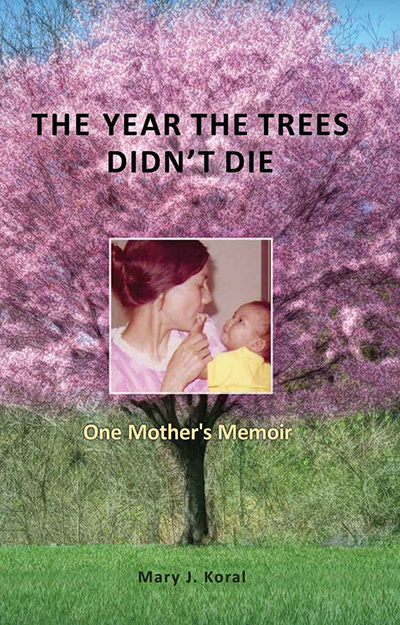 The Year the Trees Didn’t Die
The Year the Trees Didn’t Die
 Critique by Ellen LaFleche
Critique by Ellen LaFleche
Mary J. Koral's The Year the Trees Didn't Die is a lovely book. The strength of this memoir about foreign adoption derives from its clear narration and character exploration rather than verbal pyrotechnics.
The author and her husband's struggles with infertility led them to adopt three children from three different countries: Minh from Vietnam, Sung from Korea, and Anita from India. (In an interesting coincidence, Minh's adoption story dovetails with historical events documented in this year's winning memoir, Red Blood, Yellow Skin. I highly recommend reading both books close together because the stories intersect with and inform each other.)
The memoir starts slowly but builds momentum. The heart of the story takes place when the children begin to grapple not only with the standard developmental challenges of growing up but with the complications of living in a blended, multi-racial family. Each child also wrestles with questions about their home countries and biological families. In a poignant passage, Sung dictates a letter to his biological mother, words that encapsulate his interior struggle for identity:
Dear Korean Mother,
It is nice here. I like Butterfinger Bars. I go to school. I have a brother and sister and live in a green house. What do you look like? I don't know if you will get this, but if you do, write back.
The letter is never answered and Sung never knows why not.
The parents also face a multitude of ever-evolving questions and issues, especially when the children are the target of racist remarks. While each child's story is compelling, I was especially moved by Anita's efforts to cope with a complicated mix of racism, sexism and identity. An especially well written chapter recalls how Anita dealt with being physically abused by the young man she was dating.
I appreciated that this exploration of parenting did not become a book filled with child-rearing tips or recommendations. The author recognizes that parenting is a complex, ever-evolving process rooted in social and community contexts. She does not preach or offer advice. Rather, she constantly observes and evaluates, changing her own strategies according to each child's needs.
I also welcomed the clear, conversational tone of the book. At times, this simplicity of language results in powerful vignettes.
My kids had troubles. Like poppies, their troubles shot up and out in what seemed like a single day, made Ken and me catch astonished breaths. So quickly I heard things I had never heard before. I listened to them say: I don't fit. This isn't the right place. Why did you adopt me anyway? I knew these words meant more than a skinned knee...
At times, however, the conversational voice falls into cliché, as when Koral tells the reader, "We were okay, not great, but okay." Such remarks interrupt the power of the narrative. This habit of telling rather than showing was especially noticeable during transitions. A round of content editing would have been very helpful. The technique of moving back and forth in time was not always effective, another issue that would have benefitted from content editing.
I don't remember noticing any proofing errors while reading. This deserves serious kudos—errors and careless punctuation mistakes were a major reason some entries did not fare well during judging.
The physical book was attractive with a beautiful cover depicting mother and child. Interior photos would have been welcome. The book was well bound with readable double-spaced print.
Excerpt from The Year the Trees Didn't Die by Mary Koral on Scribd







